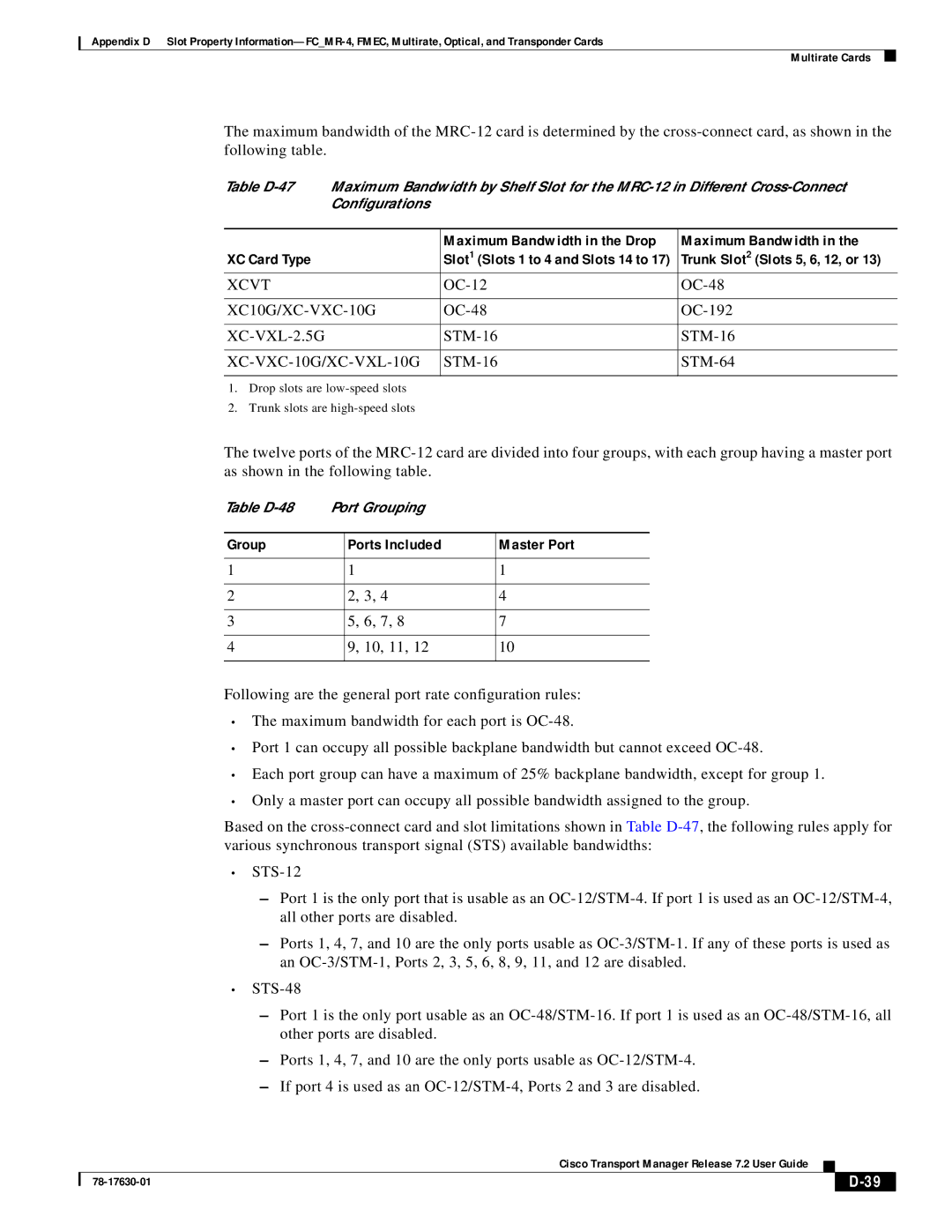
Appendix D Slot Property
Multirate Cards
The maximum bandwidth of the
Table | Maximum Bandwidth by Shelf Slot for the | ||
| Configurations |
|
|
|
|
|
|
|
| Maximum Bandwidth in the Drop | Maximum Bandwidth in the |
XC Card Type |
| Slot1 (Slots 1 to 4 and Slots 14 to 17) | Trunk Slot2 (Slots 5, 6, 12, or 13) |
XCVT |
| ||
|
|
| |
|
|
|
|
| |||
|
|
| |
| |||
|
|
|
|
1.Drop slots are
2.Trunk slots are
The twelve ports of the
Table | Port Grouping |
| |
|
|
|
|
Group |
| Ports Included | Master Port |
|
|
|
|
1 |
| 1 | 1 |
|
|
|
|
2 |
| 2, 3, 4 | 4 |
|
|
|
|
3 |
| 5, 6, 7, 8 | 7 |
|
|
|
|
4 |
| 9, 10, 11, 12 | 10 |
|
|
|
|
Following are the general port rate configuration rules:
•The maximum bandwidth for each port is
•Port 1 can occupy all possible backplane bandwidth but cannot exceed
•Each port group can have a maximum of 25% backplane bandwidth, except for group 1.
•Only a master port can occupy all possible bandwidth assigned to the group.
Based on the
•
–Port 1 is the only port that is usable as an
–Ports 1, 4, 7, and 10 are the only ports usable as
•
–Port 1 is the only port usable as an
–Ports 1, 4, 7, and 10 are the only ports usable as
–If port 4 is used as an
|
| Cisco Transport Manager Release 7.2 User Guide |
|
|
|
|
|
| |||
|
|
|
| ||
|
|
|
|
